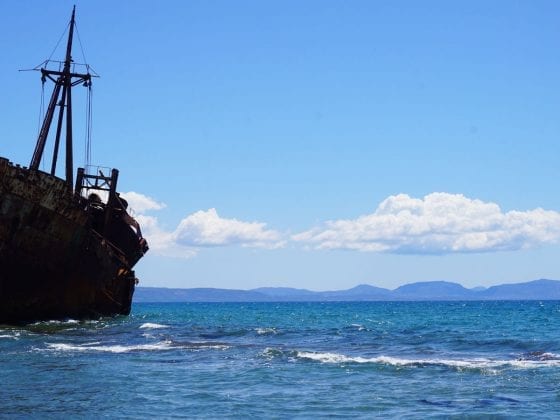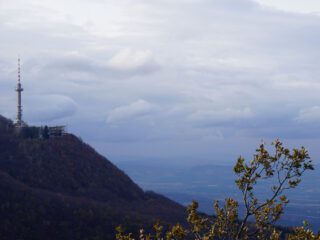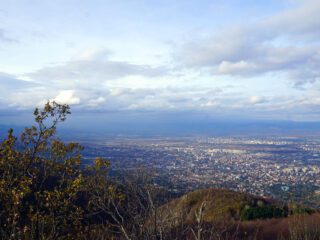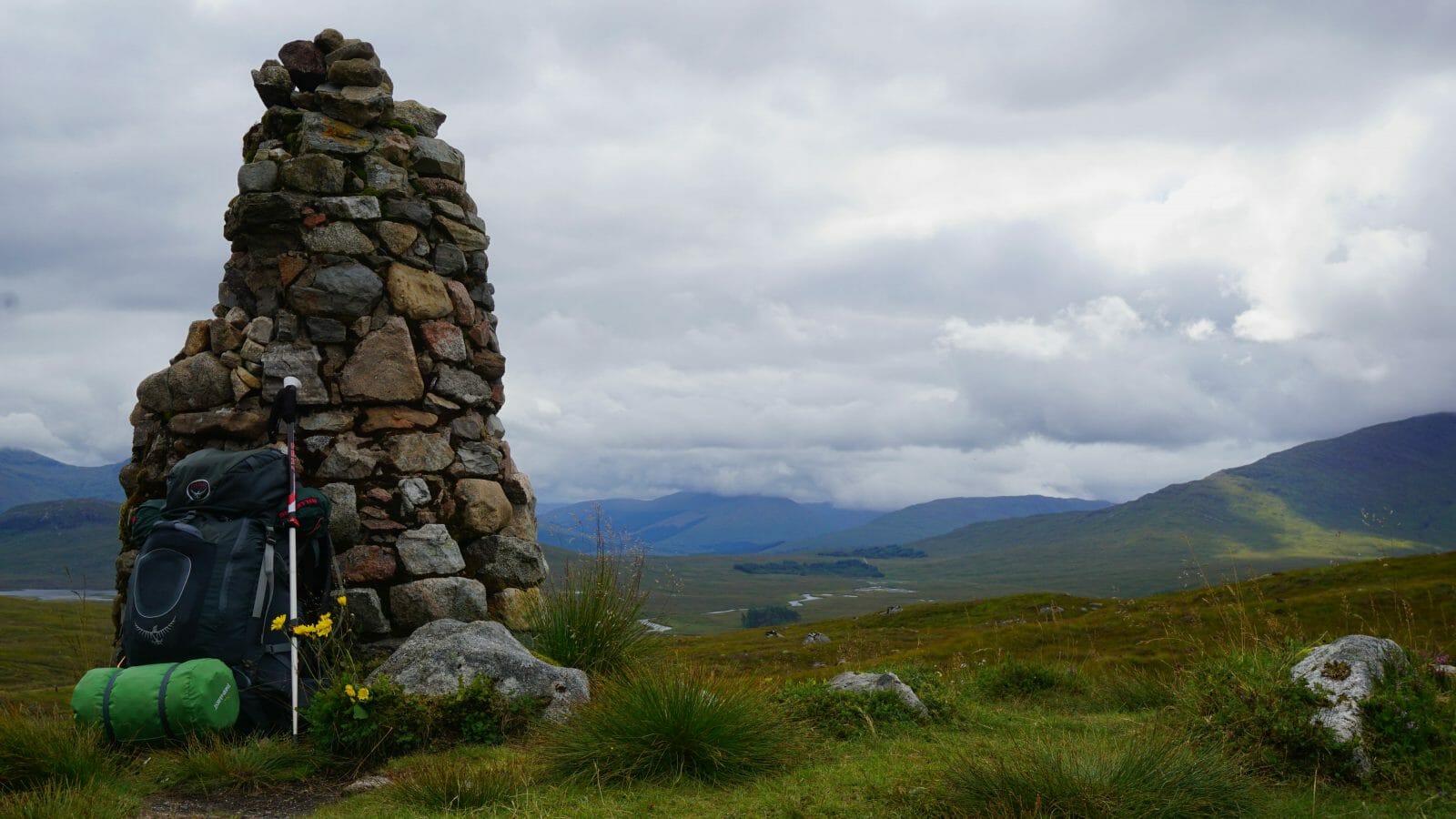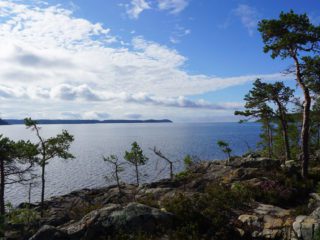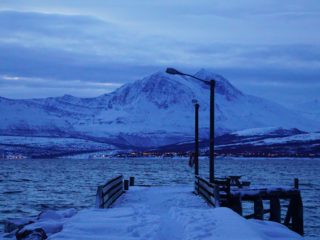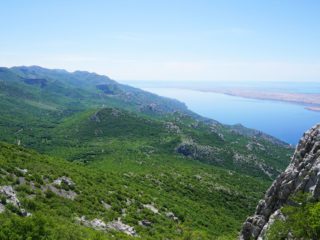Contrary to popular belief, Greece has more to offer than dreamy beaches, fresh seafood dishes and sun-kissed rocky islands. Away from idyllic harbours where small fishing boats float on clear blue waves, high stone peaks and densely forested alpine valleys dominate the landscape. Here the Zagori region lies nestled among Greece’s northern Pindus mountain range. Attracted by the promise of mountain vistas and lush surroundings, I went hiking around its landmark Vikos Gorge.
I was three days into my hike along the Vikos Gorge when I saw my first wild bear. Climbing out of the basin near the Astraka refuge I noticed something running away from an approaching group of hikers. What at first seemed like a large dog turned out to be a brown bear running along a ridge some 200 meters above me. Considering locals told me that “there are no bears up here” I was glad I ignored their wisdom and stored my food away from my campsite the night before.
After being trapped in the city during months of Covid-19 lockdown, these encounters with the natural world made my trek across the Zagori region quite a memorable one. And while the untrained hiker might encounter some difficulty with the distances and terrain involved in this trek, the rewards are definitely worth it. As a person who should have trained more during his urban lockdown, I can confirm this to be true.
The Pristine Vikos Gorge
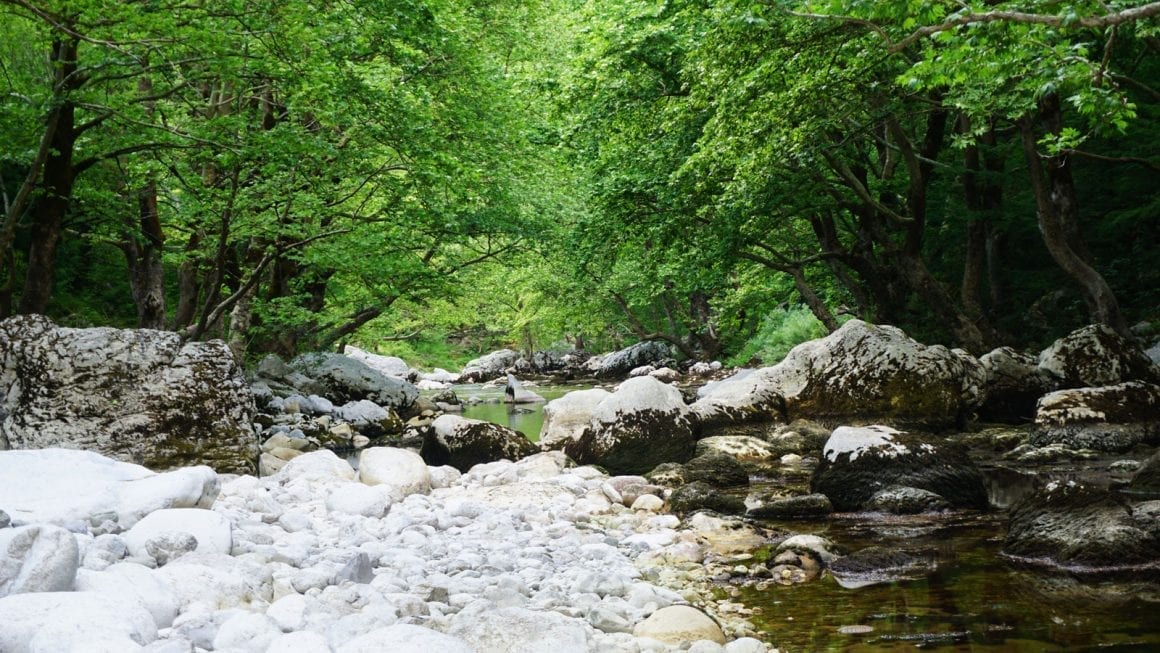
Disregarding my untrained physical state, I walked into the village of Monodendri on a sunny Friday afternoon with a full backpack and a mind eager for adventure. Perched on the cliffside above the Vikos Gorge, Monodendri offers great views over the southern end of this deep ravine filled with pristine natural beauty. The river that carved out this gorge throughout millennia is seasonal and only flows after the snows start to melt in the mountains above. On its banks grow forests that have gone untouched for hundreds of years, where numerous rare animal species take refuge among the moss-covered branches and stones of these enchanted woods.
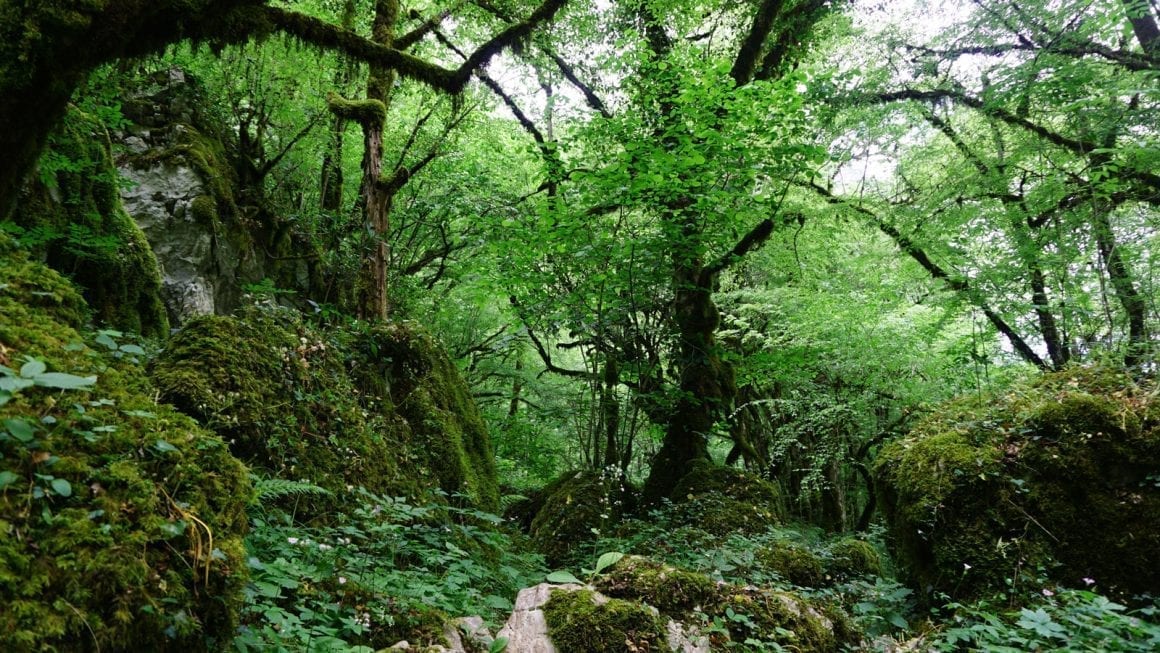
Hiking the Vikos Gorge itself takes a full day, after which a 3-hour climb leads hikers into the Timfi mountain massif towering above. The main hiking trails in this area are well-marked, and even the less popular trails in the higher regions of the mountains are relatively easy to follow. For your convenience, I re-created the route I took in Komoot:
Reaching a trailhead can be a bit of a challenge if you don’t have your own car, as public transport connections to Zagori’s villages are limited. It is possible to take buses from the nearby city of Ioannina, but these leave at irregular times on select days each week. Fortunately, hitchhiking is a common way to get around on these mountain roads.
Early Morning Tranquility
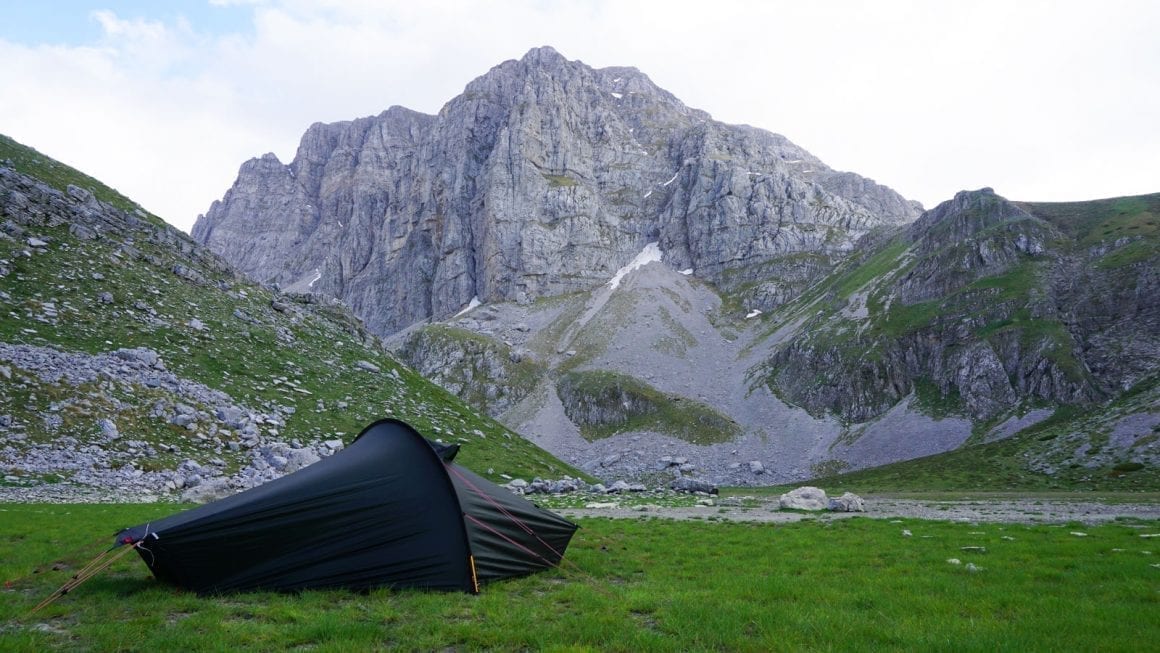
Where the first day of hiking took me along the bottom of the Vikos Gorge, the second day saw me climbing up from the village of Papingo to the Astraka refuge situated at an altitude of nearly 2000 meters. From here, hikers can choose several hiking routes leading further into the region, or visit the nearby Drakolimni (Dragon) lake. This alpine lake is a popular destination for those making the climb up to the refuge, especially on busy weekends.
For this reason, I decided to camp in the basin below the refuge and visit the lake in solitude the next morning. That night, after months of being stuck in a city, I experienced a profound silence as I camped alone in the high stone wilderness of the Timfi massif. Only the wind and the occasional bird call interrupted the peace as I fell into a deep, satisfying sleep. The feeling of serenity stuck with me in the early morning as I climbed up to Drakolimni and witnessed its smooth, tranquil surface as the last of the morning mists floated away towards the valley below.
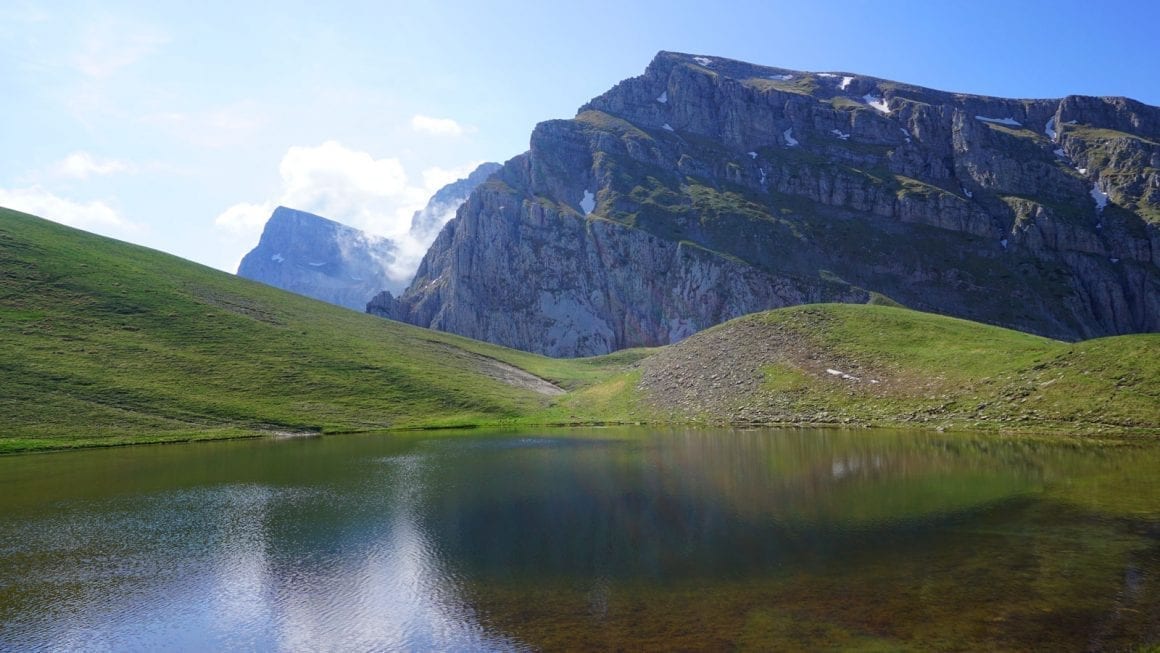
After taking in the wide views I walked back down to my campsite, from where the route continues across the high ground between the Gamila and Astraka peaks. Here the steep cliffs of the Vikos Gorge make way for a rocky alpine landscape. Prehistoric seismic activity created a wide valley where layers of rock now lie sideways, creating an illusion of giant waves turned to stone.
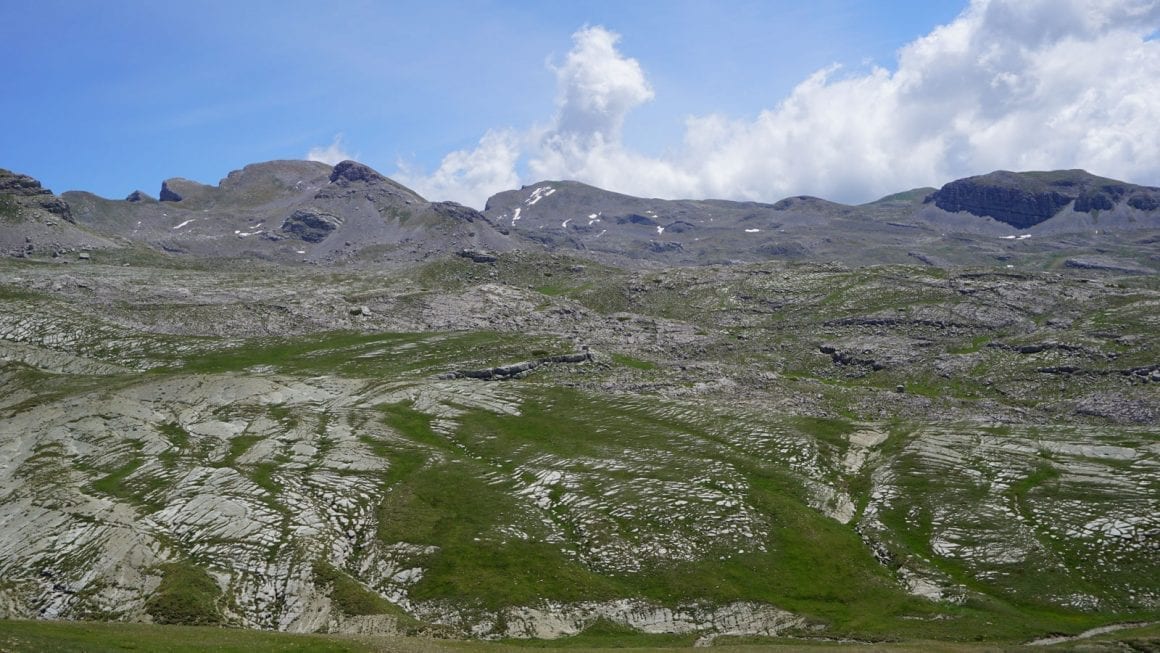
This illustrates another benefit of hiking around the Vikos Gorge; it is a splendid way to experience different natural environments in only a few days’ time. From the unspoiled primal forest at the bottom of the gorge to the rough open landscapes atop the Timfi massif, each day offers you the opportunity to feast your eyes on new scenery.
The Stone Villages of Zagori
After a somewhat precarious climb along a narrow ledge high above the Megas Lakkos river, the route leads over the southern edge of the Timfi massif. After staying on altitude for a bit it descends into the lower valleys that make up a large part of the Zagori region. Strewn across these green hills are the region’s iconic stone villages, blending almost naturally into their surroundings due to their exclusive use of local lime- and sandstone.
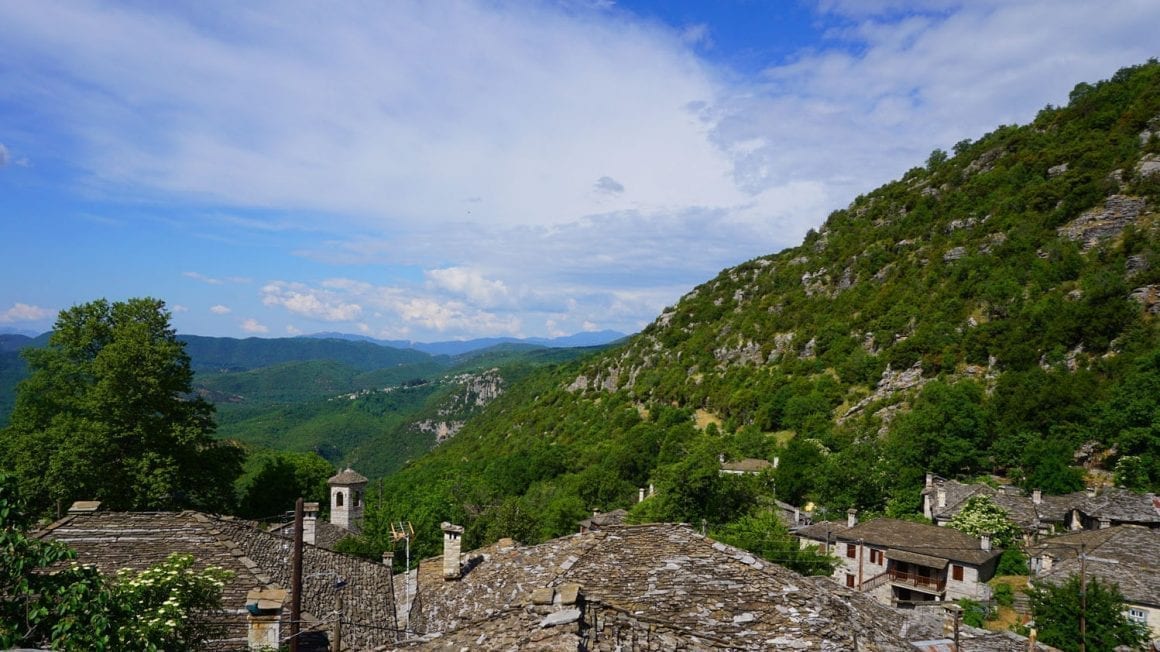
In the nineteenth century, these villages became quite prosperous due to donations from expatriate Zagorians that had become wealthy working abroad. As a result, the roads, bridges and villages in this region have been well-maintained in their original building style for more than a century, and are now protected under a UNESCO World Heritage status.
Zagori’s villages are popular with tourists, and many locals earn a living from tourism. As a result, many of these villages are filled with services catering to visitors and it can be difficult to find an authentic atmosphere in some of the larger towns. For those looking to experience a slice of ‘true’ local life, a visit to one of the lesser-known villages provides a chance to not only enjoy a more quiet environment but also help these communities by giving them your business!
Want to help out local communities during your travels? Learn about different ways of participating in sustainable tourism with this article I wrote!

The route I took lead down into the tiny village of Vradeto, which is one of the less-visited places due to its relative remoteness. I arrived late in the afternoon, having been caught by a sudden thunderstorm while being terribly exposed on the mountainside. Appearing quite soaked, tired and hungry, I received a most hospitable welcome by the family operating a restaurant and a guesthouse. Although the guesthouse was still closed due to Covid-19 restrictions, they offered me a bed in their own guest room. After which I thanked them by ordering a large meal in their restaurant, of course.
Despite my obvious bias, I can highly recommend a visit to Vradeto to enjoy one of the more quiet, less touristic villages in the Zagori region. As a bonus, the nearby Beloi viewpoint offers some of the best vistas of the Vikos Gorge below! Although Vradeto is perfectly accessible by car, the most extraordinary way of reaching the village is by climbing the Vradeto Steps carved into the cliffs near the southern edge of the village.

By following these steps down and crossing the ancient stone bridges in the gorge below, the route leads you to the village of Kapesovo. From here, you can take a bus or hitch-hike back to your starting point, if you need to. I can recommend spending another day or two in the area, though!
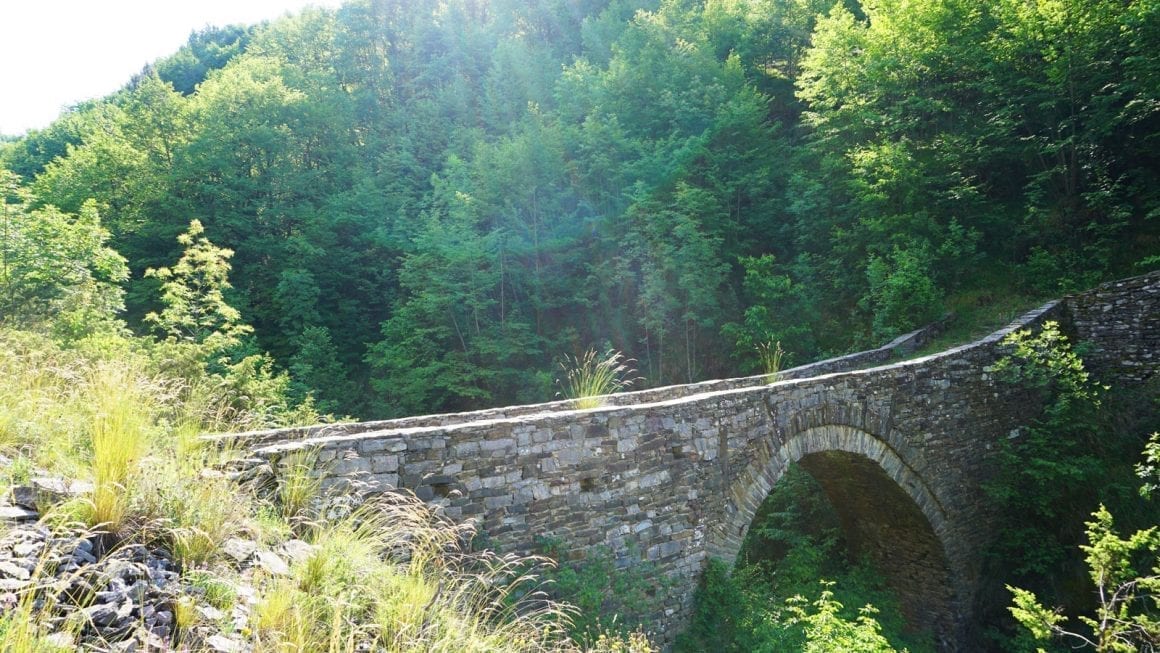
After you are done hiking around the Vikos Gorge, Zagori still has a lot to offer. There are numerous ancient trails connecting the stone villages, often leading through gorgeous scenery and over photogenic stone bridges that are unique to the region. And for those looking to camp, the abandoned farming terraces around most villages offer great spots for wild camping. While this is not officially allowed, locals don’t seem to be bothered as long as you keep it clean!
When you’ve seen enough of Zagori, the north of Greece offers plenty of possibilities for hiking enthusiasts looking to escape the scorching sun of the Mediterranean coast. Also, the Dinaric Alps of Albania and Montenegro are relatively close by.
Those who have visited its northern provinces can only agree: Greece has much more to offer than just lazy beach holidays!



